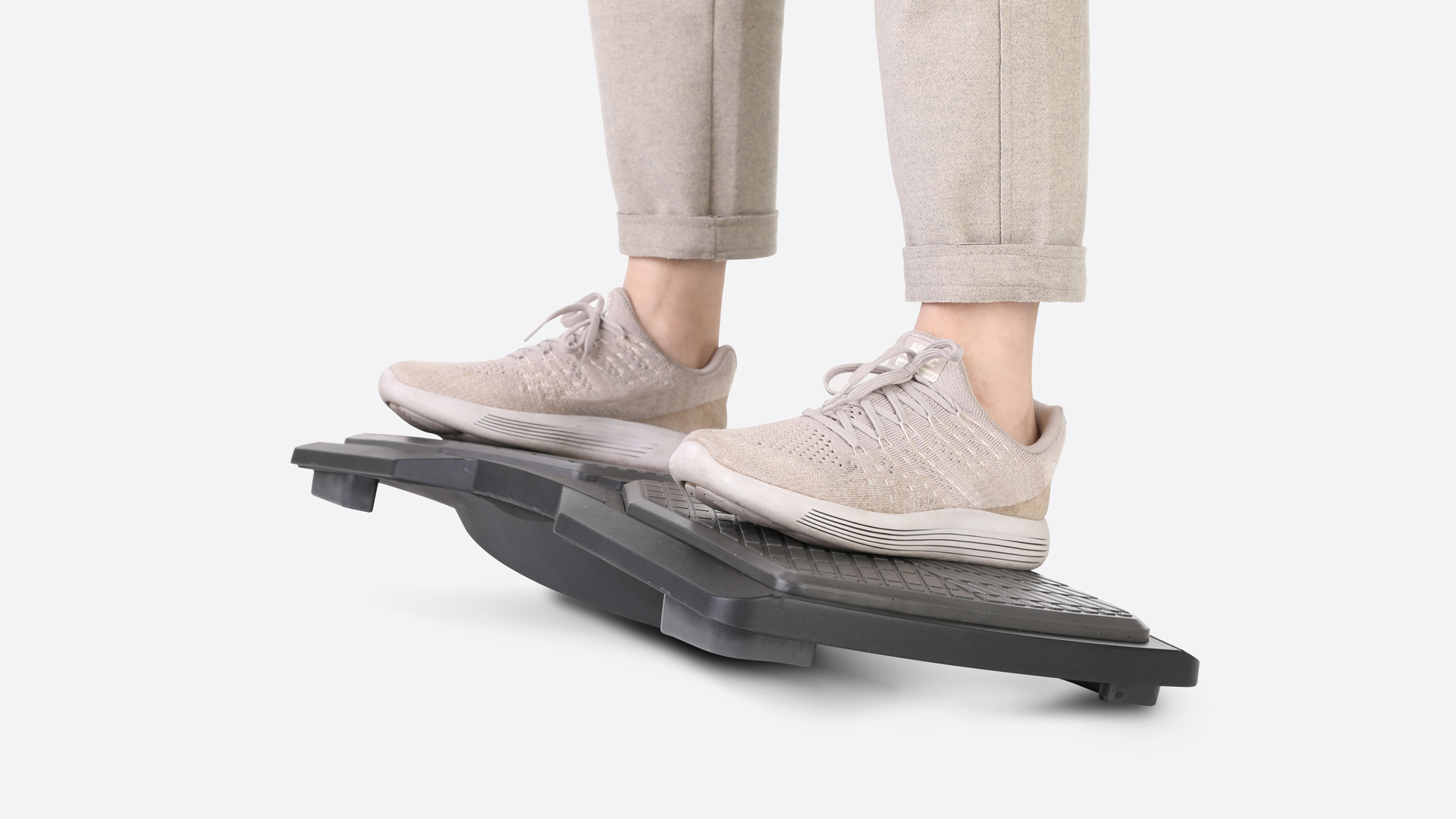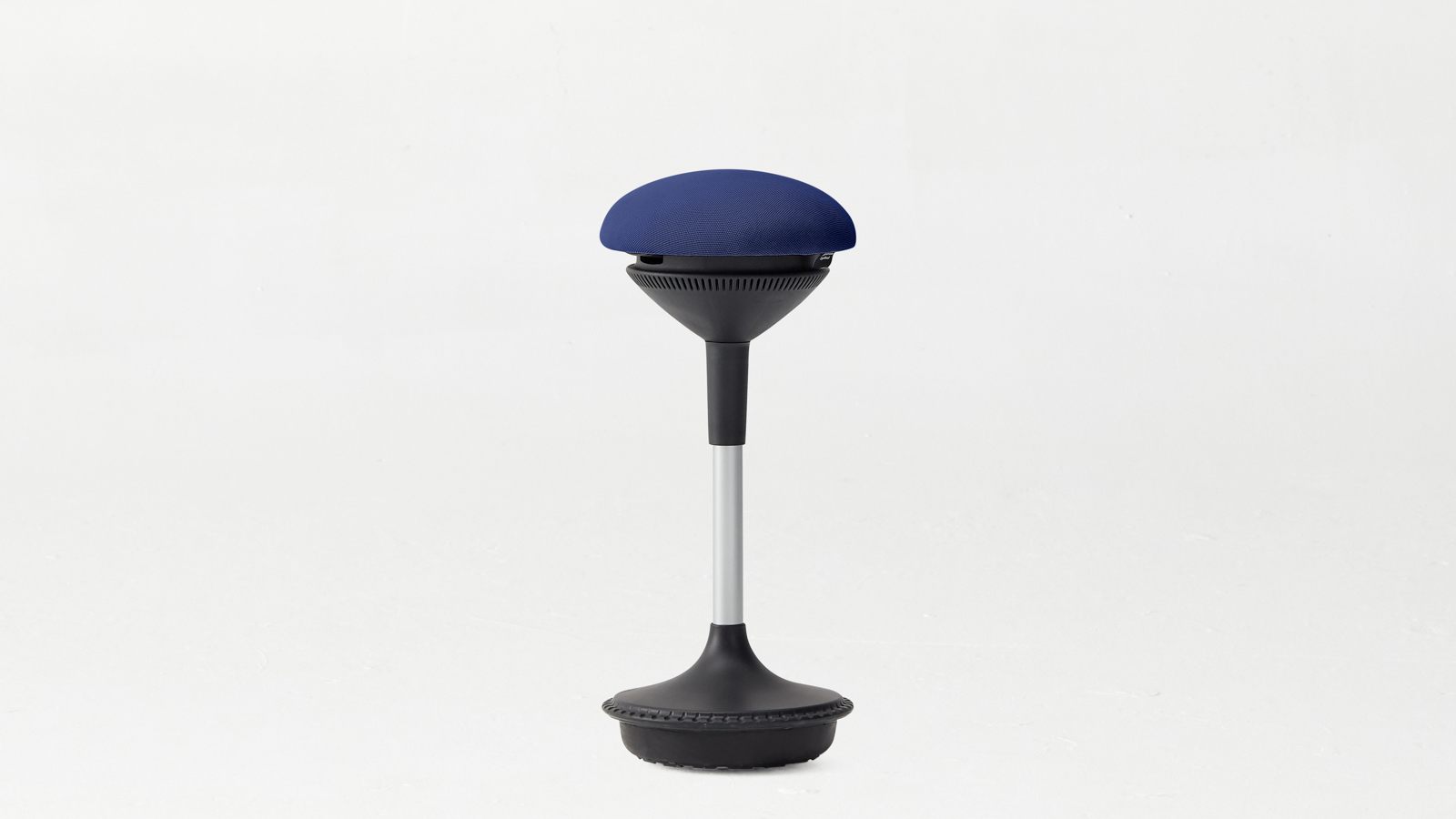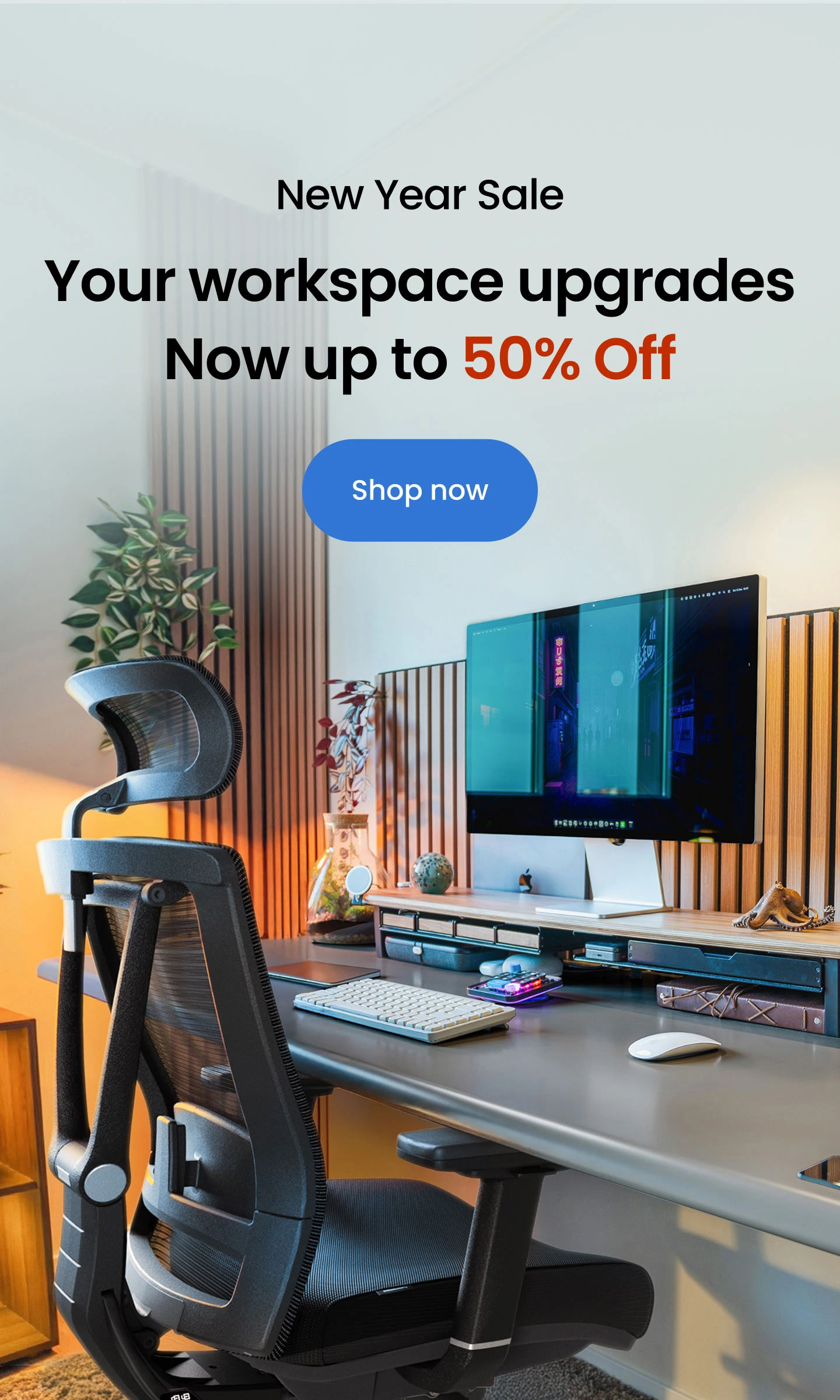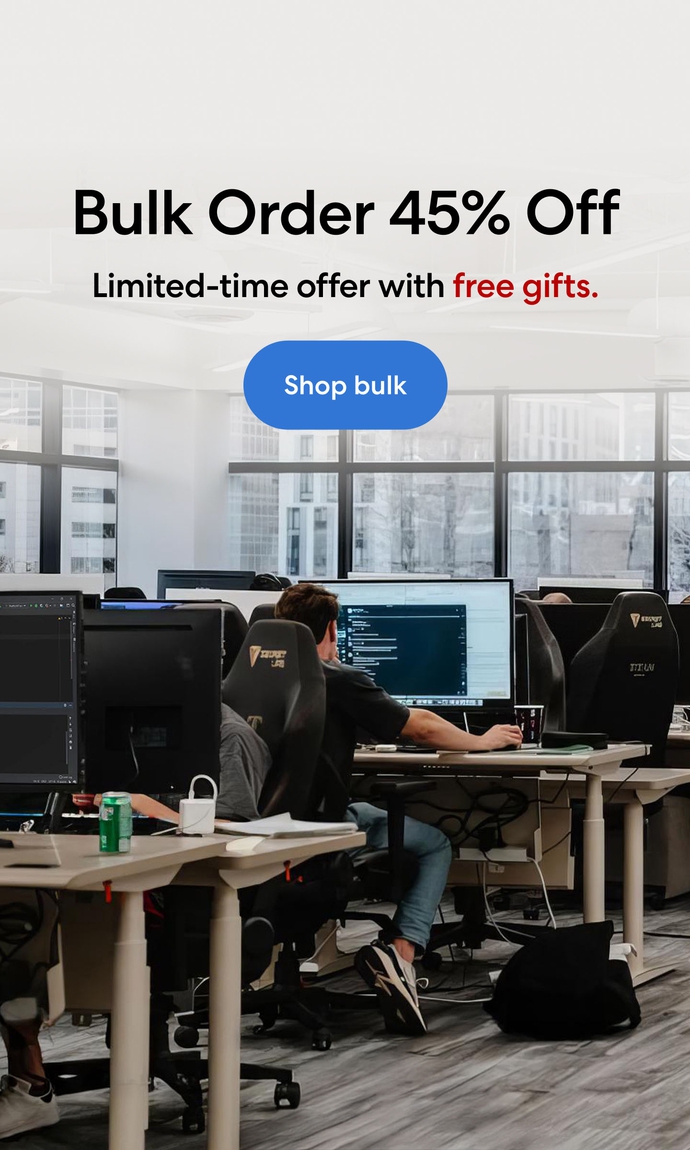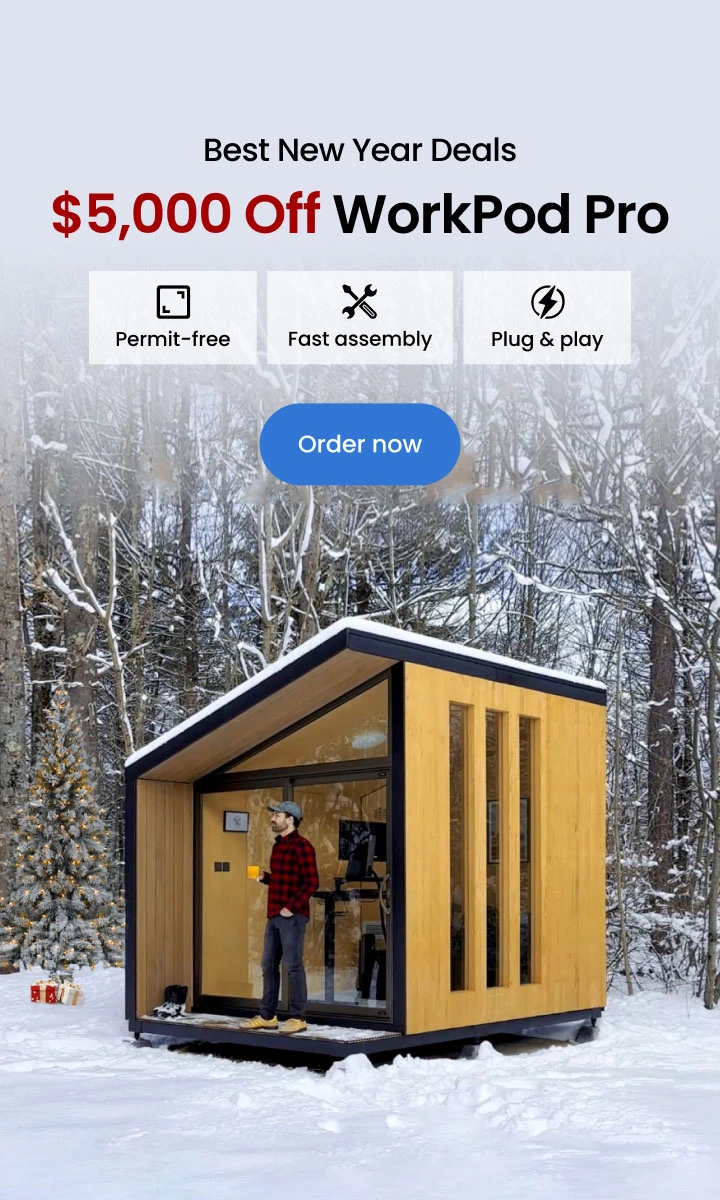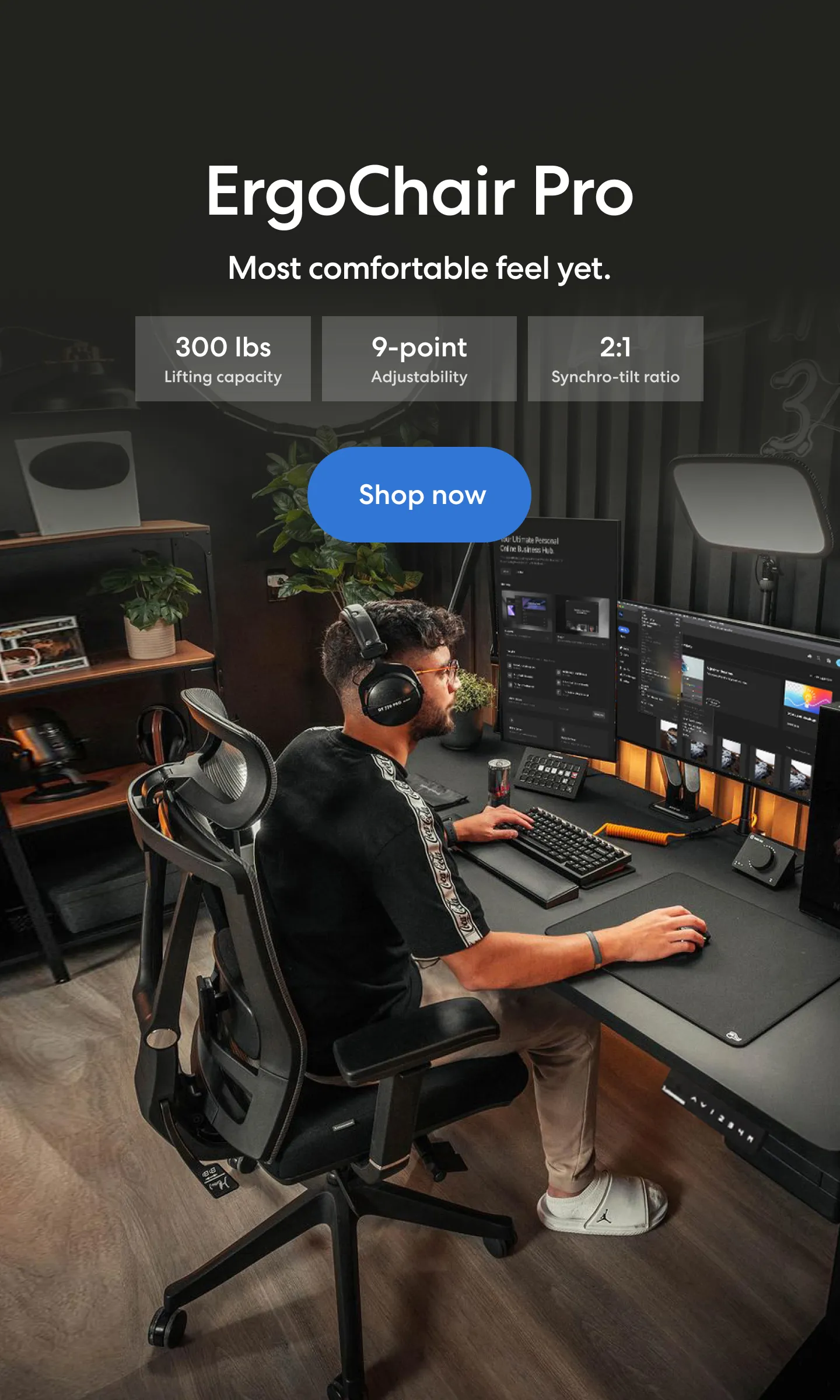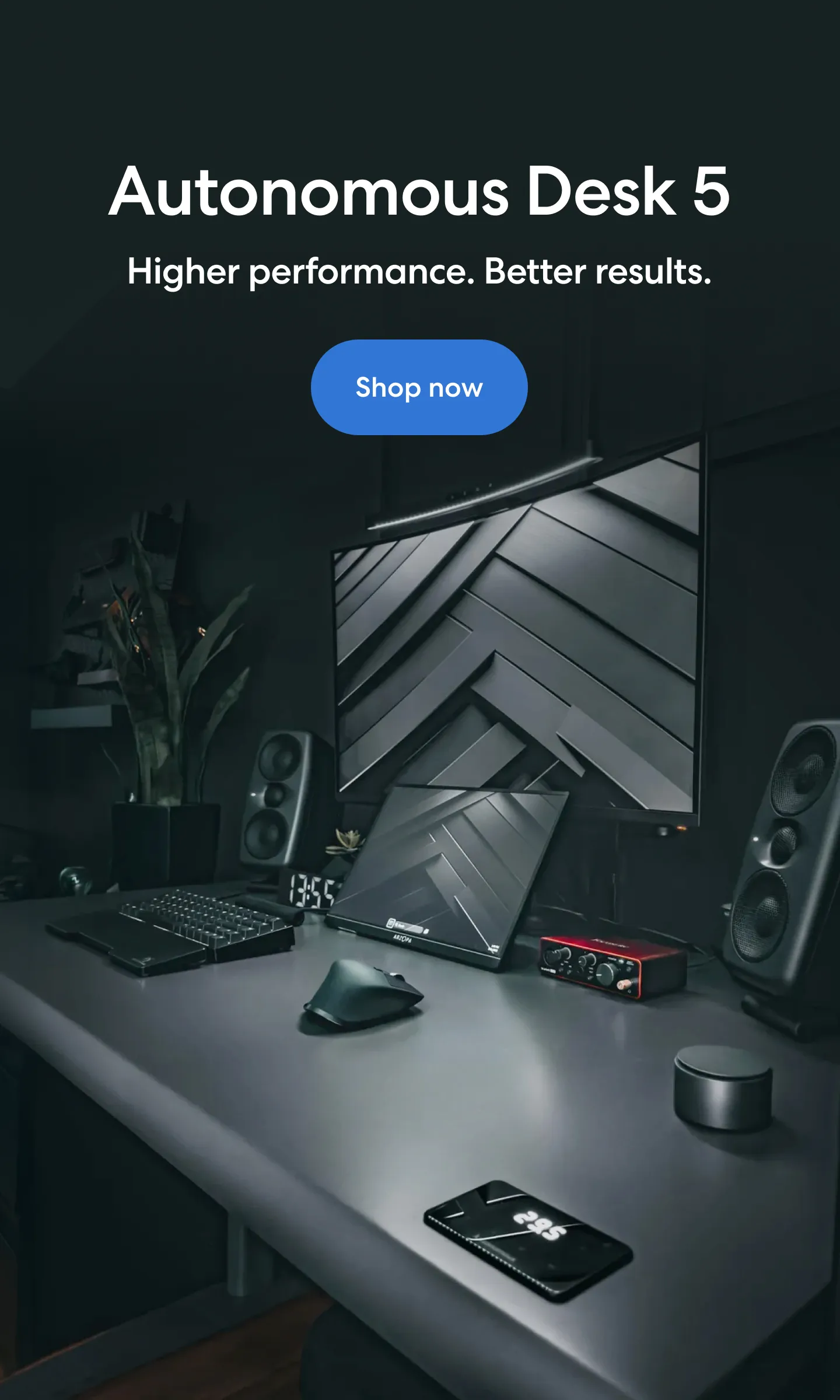.webp)
10 Best Office Chair Alternatives For Comfort & Posture
Table of Contents
Most of us spend hours every day in front of a desk, and the chair we sit on plays a big role in how our bodies feel. While traditional office chairs are everywhere, they’re not always the best solution for posture, comfort, or long-term health. Over time, sitting in the same position can lead to stiffness, back pain, and a lack of energy.
That’s why many people are starting to look for office chair alternatives that move beyond the classic swivel chair and offer something different. In this guide, we’ll explore some of the best office chair alternatives available today, breaking down what makes them unique and who they’re best suited for.
1. Kneeling Chairs
Kneeling chairs are one of the earliest and most recognizable office chair alternatives, introduced in the 1970s as a response to rising concerns about sedentary lifestyles.
Their design usually combines a forward-sloping seat with padded knee or shin rests, creating a posture where the thighs drop at an angle of about 60–70 degrees instead of the typical 90 degrees found in standard chairs. This angle repositions the pelvis so the spine naturally stacks in alignment, without forcing the user to lean against a backrest.
Many modern kneeling chairs include features like adjustable seat tilt, memory foam padding, or casters for mobility. Some even incorporate rocking bases that allow gentle forward and backward motion, giving users a subtle way to stay active while working.

Benefits Of Kneeling Chairs
The biggest advantage of kneeling chairs lies in the way they change spinal loading. In a standard office chair, the lower back tends to round over time, compressing the lumbar discs. The kneeling position shifts part of the body’s weight forward onto the shins and redistributes pressure along the spine, which can reduce discomfort in the lower back and hips.
Another benefit is increased postural awareness. Because there is little or no backrest to “fall into,” users naturally maintain a more upright posture. This forward alignment also opens the diaphragm and chest, which can make breathing feel less restricted during long hours at a desk. Some users even report improved alertness because the position requires active engagement rather than passive reclining.
Pros And Cons
Pros:
- Reduces lumbar compression by altering the hip and spine angle
- Encourages active sitting that prevents prolonged slouching
- Can improve circulation and breathing efficiency by keeping the torso open
- Compact, lightweight design makes it easy to move between spaces
Cons:
- Prolonged pressure on the knees and shins may cause discomfort, especially without breaks
- Less versatile than fully ergonomic chairs with multiple adjustments
- May feel unstable for tasks requiring frequent side-to-side reaching
- Transitioning between positions (sitting to standing) can be less fluid
Best For
Kneeling chairs are particularly well-suited to individuals who experience recurring back pain from sitting in traditional chairs. They’re also valuable for people looking to build healthier sitting habits, since the posture itself acts as a reminder to stay upright. However, they are not meant to be an all-day solution. Instead, they work best as part of a rotation of seating options—paired with sit-stand desks, ergonomic stools, or conventional chairs for variety.
For writers, designers, or anyone who spends hours doing focused desk work, a kneeling chair can relieve spinal strain during those periods of deep concentration. You can explore more details in this kneeling office chair review, which explains the full benefits and considerations. For more dynamic or movement-heavy tasks, though, switching to a different desk chair alternative may feel more practical.
2. Saddle Chairs
Saddle chairs take their inspiration from equestrian saddles, designed to position the body as if you were riding a horse. Instead of a flat seat, they feature a contoured design—often with a split or single-piece saddle shape—that naturally spreads the legs apart and drops them downward. This creates a wide hip angle, usually around 130–135 degrees, compared to the 90 degrees in a traditional office chair.
Some models are simple stools with no backrest, while higher-end versions may include adjustable seat tilt, height controls, and small lumbar supports. Because of the elevated seating position, best ergonomic saddle chairs usually pair with height-adjustable desks, allowing the user to sit taller than they would in a standard office chair.
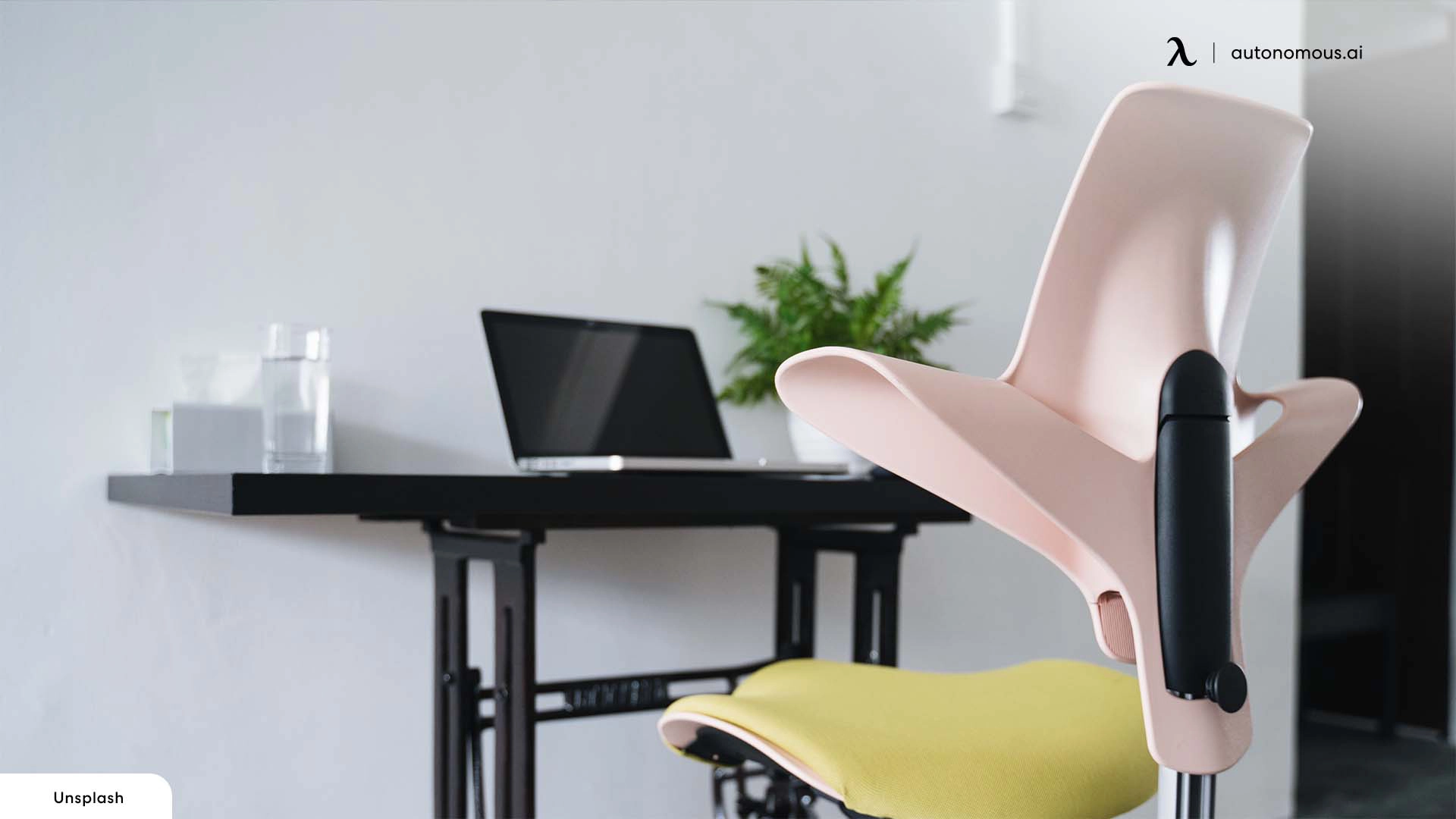
Benefits Of Saddle Chairs
The primary benefit of a saddle chair is the way it promotes a neutral spine. Opening the hip angle keeps the pelvis upright and helps the spine maintain its natural curvature without conscious effort. This reduces slouching and pressure on the lumbar region, making it easier to sit for longer stretches without fatigue.
Another advantage is improved leg circulation. In a standard chair, the seat edge can press into the backs of the thighs, restricting blood flow. With a saddle chair, the downward angle of the legs eliminates that compression, which can reduce numbness or stiffness during long hours at the desk. For tasks that require upper body mobility—like reaching across a large desk or moving frequently—the open stance of a saddle chair provides excellent freedom of movement.
Pros And Cons
Pros:
- Naturally encourages upright posture without forcing effort
- Reduces thigh compression and supports better circulation
- Allows greater mobility for tasks requiring side-to-side or forward reach
- Available in both split and solid saddle designs for different comfort preferences
Cons:
- May feel awkward at first, requiring a short adjustment period
- Typically requires a higher desk or an adjustable workstation
- Minimal or no backrest may feel tiring for users used to full support
- It can be expensive compared to other office chair alternatives
Best For
Saddle chairs are particularly useful for professionals who need to maintain mobility while seated—such as dentists, artists, or designers—since the straddle position allows quick, fluid movements. They’re also an excellent option for people who struggle with circulation issues or discomfort from thigh pressure in standard chairs.
For office workers aiming to improve posture but who still want the option to move easily, a saddle chair can be one of the best office chair alternatives. When paired with a sit-stand desk, it creates a versatile setup that encourages healthier sitting without sacrificing comfort or freedom of movement.
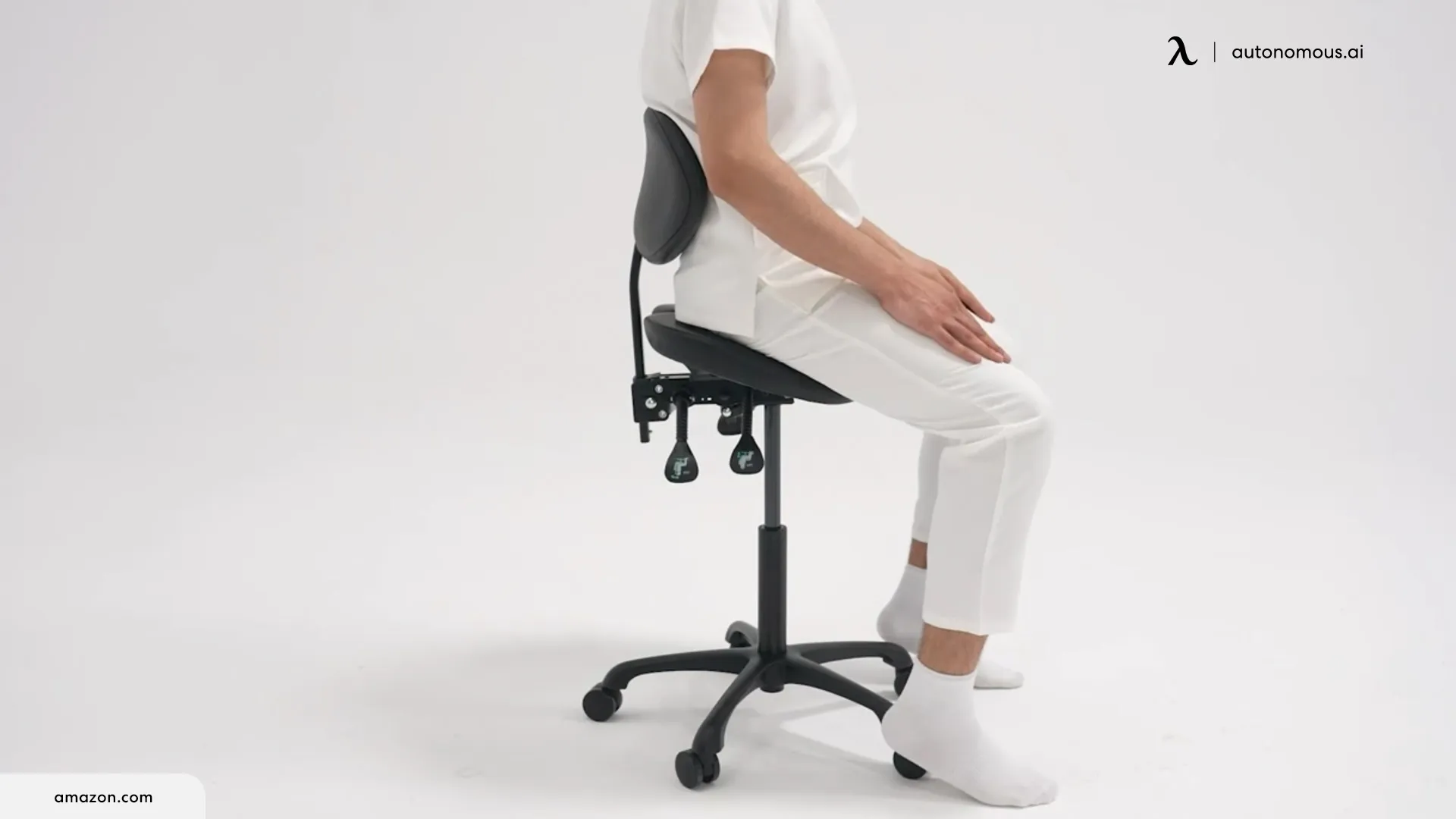
3. Stability (Exercise) Ball Chairs
Stability ball chairs—often called exercise balls or yoga balls—replace the rigid base of a traditional chair with an oversized inflatable ball, usually 55–75 cm in diameter. Some come as standalone balls, while others are mounted in rolling bases with small backrests for added support.
Unlike conventional seating, the surface of a stability ball is unstable, which forces the body to make micro-adjustments to maintain balance. This design encourages what’s often called active sitting, where subtle movements prevent the body from locking into a single static position.
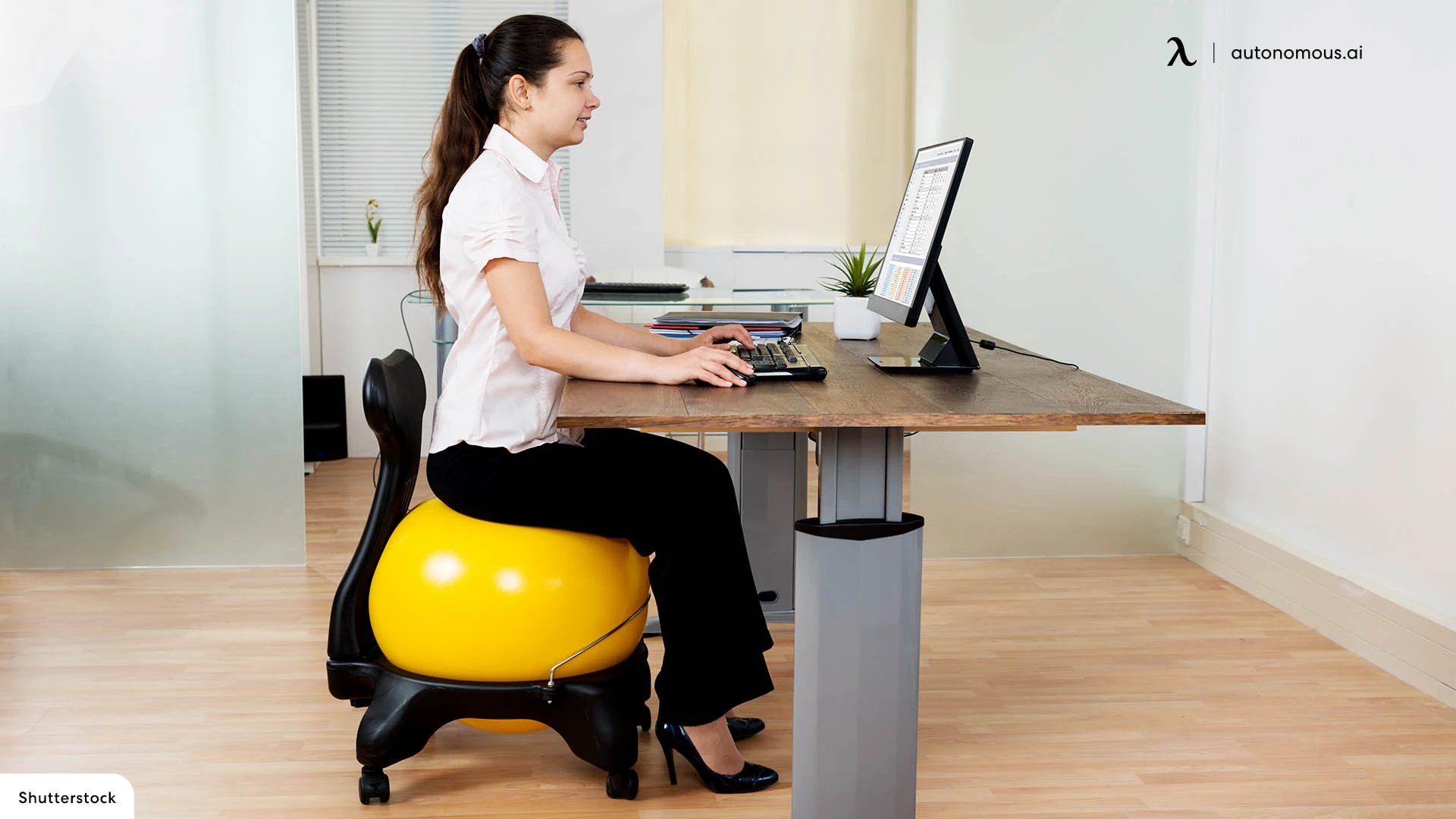
Benefits Of Stability Ball Chairs
The biggest benefit of stability ball chairs is how they engage core muscles. Because the ball shifts under your weight, your abdominal and back muscles work continuously to stabilize your posture. This low-level activity throughout the day can help reduce stiffness and promote better body awareness.
The spherical shape also eliminates pressure points under the thighs and hips, which can improve circulation compared to hard-edged seats. Some users find that the constant movement helps them stay more alert and energized during long work sessions. For those who enjoy blending light exercise with desk time, the ball can double as a tool for stretching, mobility drills, or quick workout breaks.
Pros And Cons
Pros:
- Promotes active sitting and continuous core engagement
- Reduces thigh and hip pressure for better circulation
- It can double as a fitness tool for stretching or exercise
- Encourages subtle movement, which helps fight desk fatigue
Cons:
- Limited back support, which can be tiring for extended use
- May feel unstable or unsafe for tasks requiring precise focus
- Height isn’t adjustable and may not align well with all desk setups
- Potential for rolling or slipping if not placed in a stabilizing base
Best For
Stability ball chairs are ideal for short work sessions where movement is encouraged, such as brainstorming, creative tasks, or at-home setups where space allows for flexibility. They’re best suited to people who want to bring more activity into their day and don’t mind the learning curve of balancing while working.
As a full-time replacement, they aren’t practical for most office workers, but as part of a mix of desk chair alternatives, a ball chair for the office can bring variety and keep the body from settling into repetitive, unhealthy postures.
For individuals looking for unconventional office chairs that blend wellness with function, active chairs such as stability balls remain a popular choice.
4. Perching Stools
Perching stools, sometimes called sit-stand stools, are designed to support the body in a position between sitting and standing. The seat is slightly tilted, and the base may be fixed or designed to wobble for gentle movement. Many models are height-adjustable, allowing them to pair naturally with sit-stand desks.
Benefits Of Perching Stools
The semi-standing posture reduces the fatigue that can come from standing for long periods while still avoiding the spinal compression of sitting. This in-between position helps keep hips and legs active, encourages better circulation, and allows you to shift weight easily throughout the day.
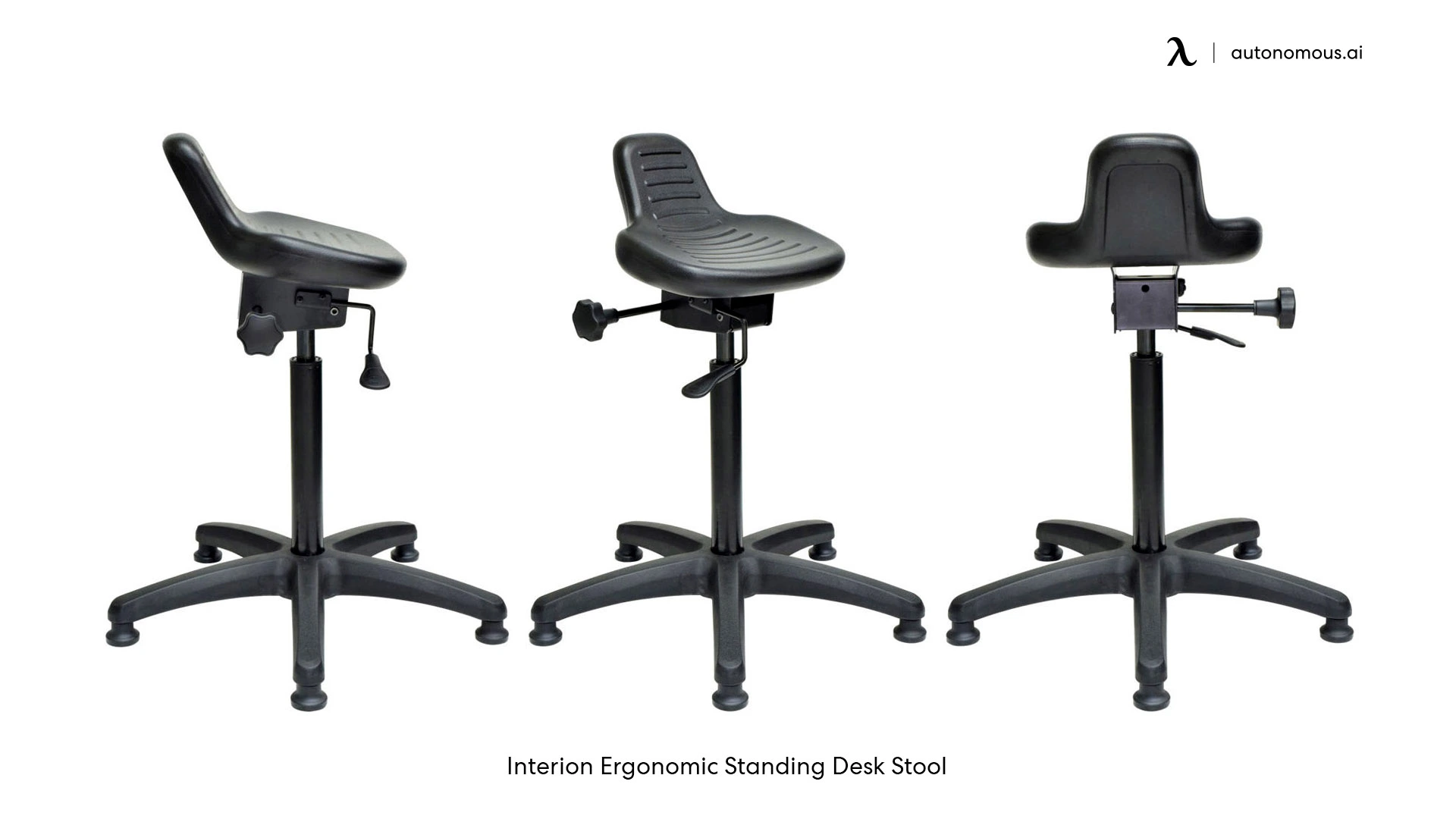
Pros And Cons
Pros:
- Reduces strain from both full-time sitting and full-time standing
- Lightweight and portable for flexible work setups
- Supports active postures and small movements
- Complements the sit-stand desk use perfectly
Cons:
- Limited cushioning for extended comfort
- May feel less stable than a traditional chair
- Offers minimal back support
Best For
Perching stools are best for workers using height-adjustable desks or those who like to switch frequently between positions. They’re also great for compact spaces where mobility and flexibility are a priority.
For anyone experimenting with office chair alternatives, perching stools are one of the easiest to integrate into a daily routine.
5. Balance Boards
Balance boards are not chairs at all, but platforms placed under your feet while standing. They rock gently in different directions or offer a 360-degree tilt, requiring constant micro-adjustments from your legs and core muscles.
Benefits Of Balance Boards
By keeping the body in motion, balance boards help prevent stiffness and fatigue during long-standing sessions. They stimulate circulation, strengthen lower-body muscles, and add variety to a standing desk routine.
To maximize these benefits, you can also incorporate simple balance board exercises for standing desks, which add movement and keep your posture more dynamic throughout the day.
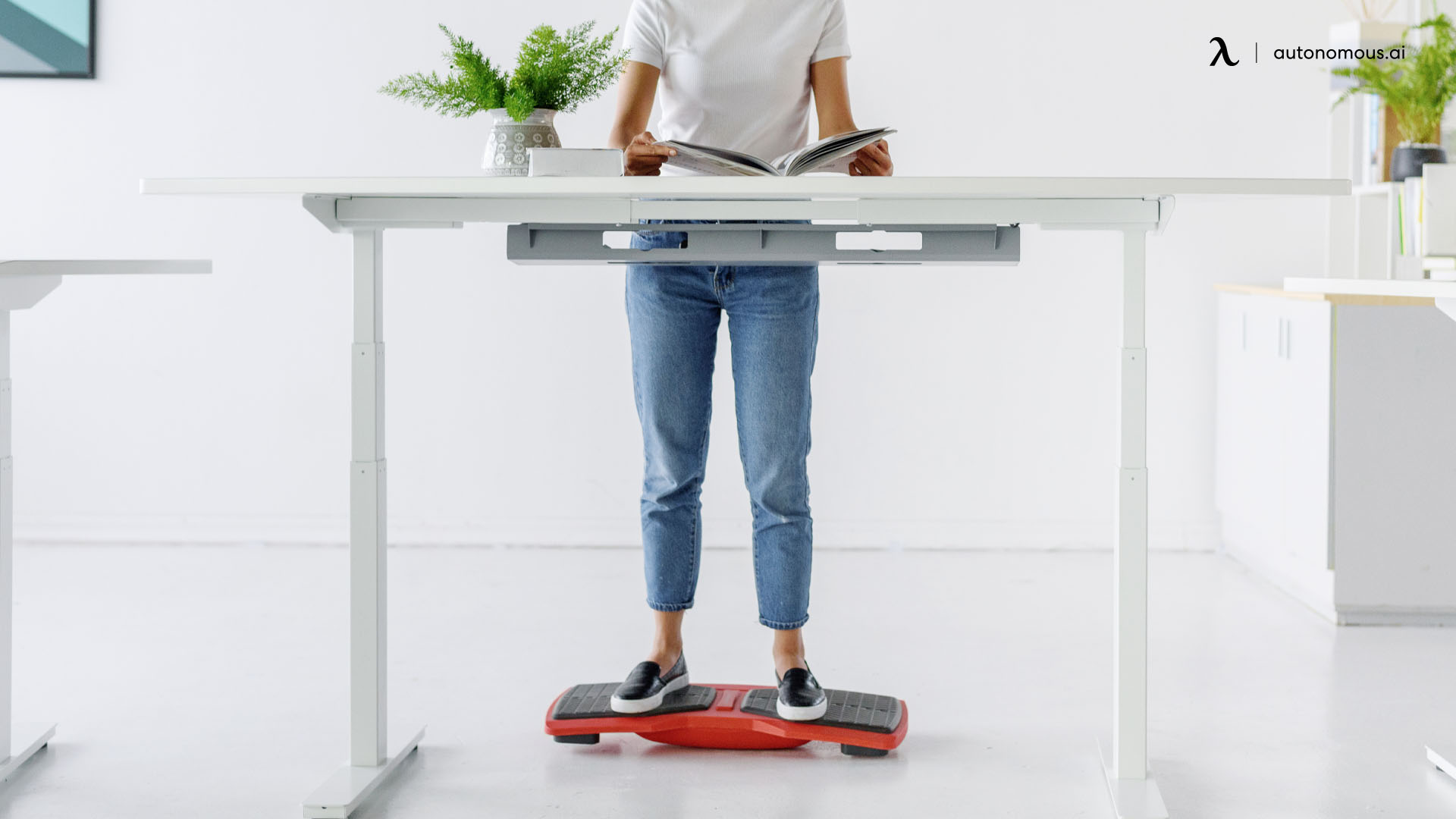
Pros And Cons
Pros:
- Promotes constant movement to avoid static posture
- Builds strength in legs and core
- Small, lightweight, and easy to store
- Adds energy to long-standing desk sessions
Cons:
- Not a seating option; must be paired with standing
- Balance can be difficult at first, especially for beginners
- May not suit tasks requiring intense focus or precision
Best For
Balance boards are a strong choice for people who already use standing desks and want to make the experience healthier and more dynamic. While not a seating replacement, they’re a valuable addition to a rotation of desk chair alternatives that emphasize active working.
.webp)
6. Under-Desk Bikes And Ellipticals
Under-desk bikes and ellipticals are compact fitness machines designed to fit beneath a desk, allowing you to pedal or stride while working. Some models are quiet, resistance-adjustable, and built to track metrics like calories burned or distance traveled.
Benefits Of Under-Desk Bikes And Ellipticals
These tools bring exercise into the workday, helping burn calories, increase blood flow, and reduce the negative effects of prolonged sitting. They can also provide a mental boost, as light movement often helps with focus and stress management.
To explore this further, here’s a guide on the benefits of using an under-desk bike and how it can fit into daily work routines.
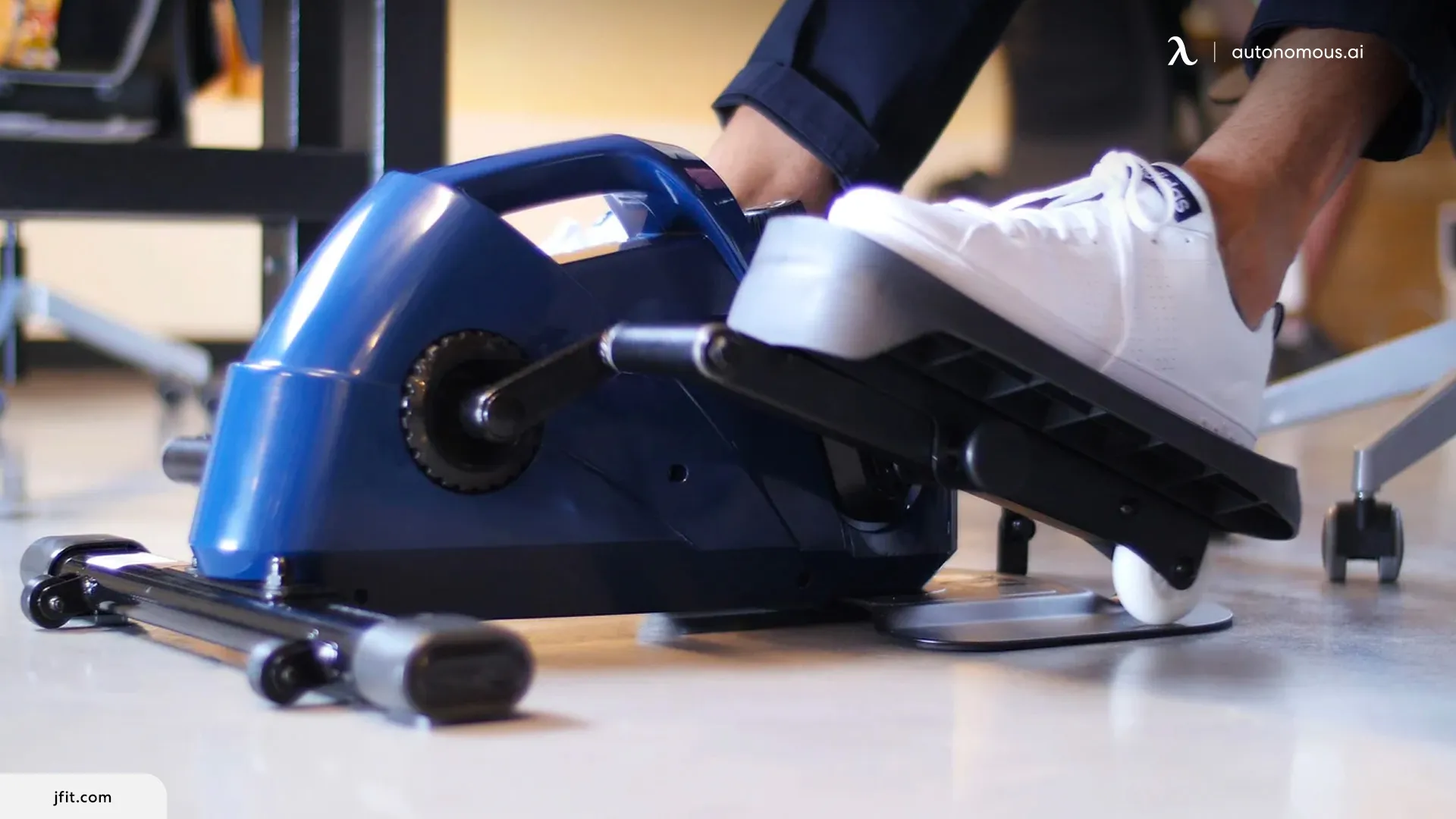
Pros And Cons
Pros:
- Encourages cardiovascular activity during desk work
- Can combat sedentary behavior without taking extra time
- Quiet models allow use in shared workspaces
- Adds variety to traditional seated tasks
Cons:
- Requires extra legroom beneath the desk
- Continuous use may be distracting for some tasks
- More expensive than most office chair alternatives
- Less portable than stools or balance boards
Best For
These options are perfect for remote workers or home office setups where space isn’t an issue. They suit people who want to stay active without leaving their desk, making them one of the more unconventional but effective office chair alternatives.
Another tool in the same spirit is an under-desk treadmill with incline, which lets users add walking into their daily routine while working. Paired with a standing desk, it creates a setup that lets you shift between sitting, standing, and moving—helping you stay active and comfortable during long hours at work.
7. Bean Bag Chairs
Bean bag chairs are oversized, cushion-filled seats that mold to the shape of the body. They come in various sizes, from small loungers to extra-large models designed for full-body support.
Benefits Of Bean Bag Chairs
Their softness provides a casual, relaxed seating option that reduces pressure points. The enveloping design can be soothing, helping relieve tension during breaks or casual laptop work.
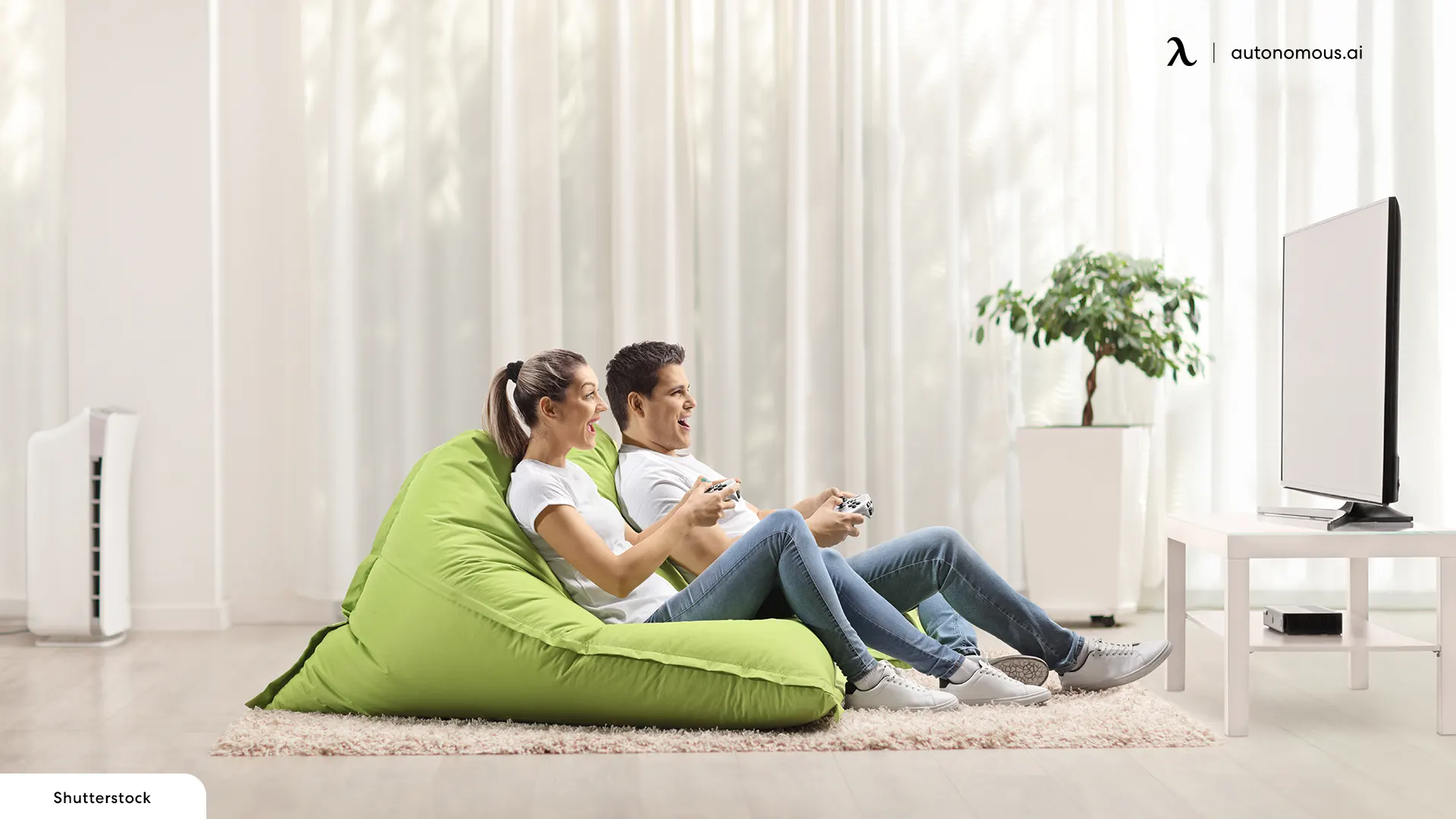
Pros And Cons
Pros:
- Extremely comfortable for short-term use
- Adaptable to body shape, reducing localized pressure
- Adds a relaxed, creative vibe to home offices
Cons:
- Offers little structural support for posture
- Difficult to get in and out of, especially for taller individuals
- Not suited for long work sessions
Best For
Bean bags are best for informal settings or creative tasks where relaxation matters more than posture. They’re not a primary work chair but can be a fun, unconventional option to mix into flexible setups.
8. Recliners And Zero-Gravity Chairs
Recliners and zero-gravity chairs support the entire body by distributing weight evenly across the back, legs, and hips. The “zero-gravity” position elevates the legs above the heart, mimicking the posture astronauts use during space travel to reduce pressure.
Benefits Of Recliners And Zero-Gravity Chairs
This seating style minimizes spinal compression and promotes deep relaxation. It can help relieve stress, muscle tension, and circulation issues, making it particularly helpful for those with back pain or mobility concerns.
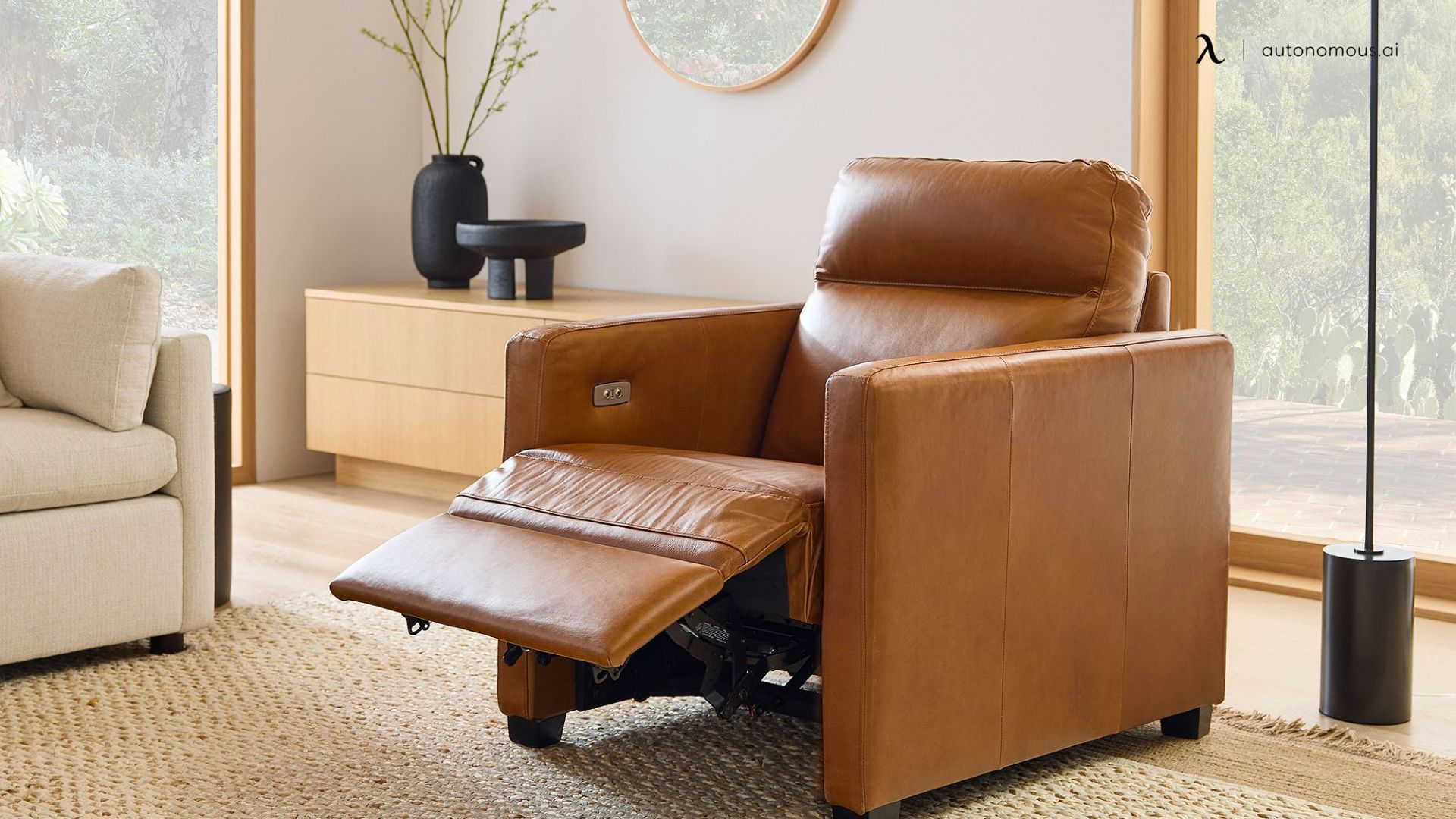
Pros And Cons
Pros:
- Provides complete support and comfort
- Reduces strain on spine and joints
- Ideal for recovery and relaxation
Cons:
- Not practical for active desk work
- Large footprint not suited for small offices
- Can encourage passivity rather than productivity
Best For
These chairs are excellent for home offices that double as relaxation spaces or for people recovering from injuries who need relief during light laptop work. They’re among the most unconventional office chair alternatives, but they can play a role in specific situations.
For some, they may even serve as ADHD chairs, offering a calming setup that helps with focus and comfort when traditional seating feels too restrictive.
9. Ergonomic Active Sitting Stools
Ergonomic stools feature curved or tilting bases that allow gentle rocking or swiveling while seated. Unlike static chairs, they’re intentionally designed to keep the body in motion, engaging stabilizing muscles throughout the day.
Benefits Of Ergonomic Stools
The movement prevents stiffness, builds core strength, and encourages more frequent posture shifts. Many models are height-adjustable and pair well with sit-stand desks for maximum flexibility.
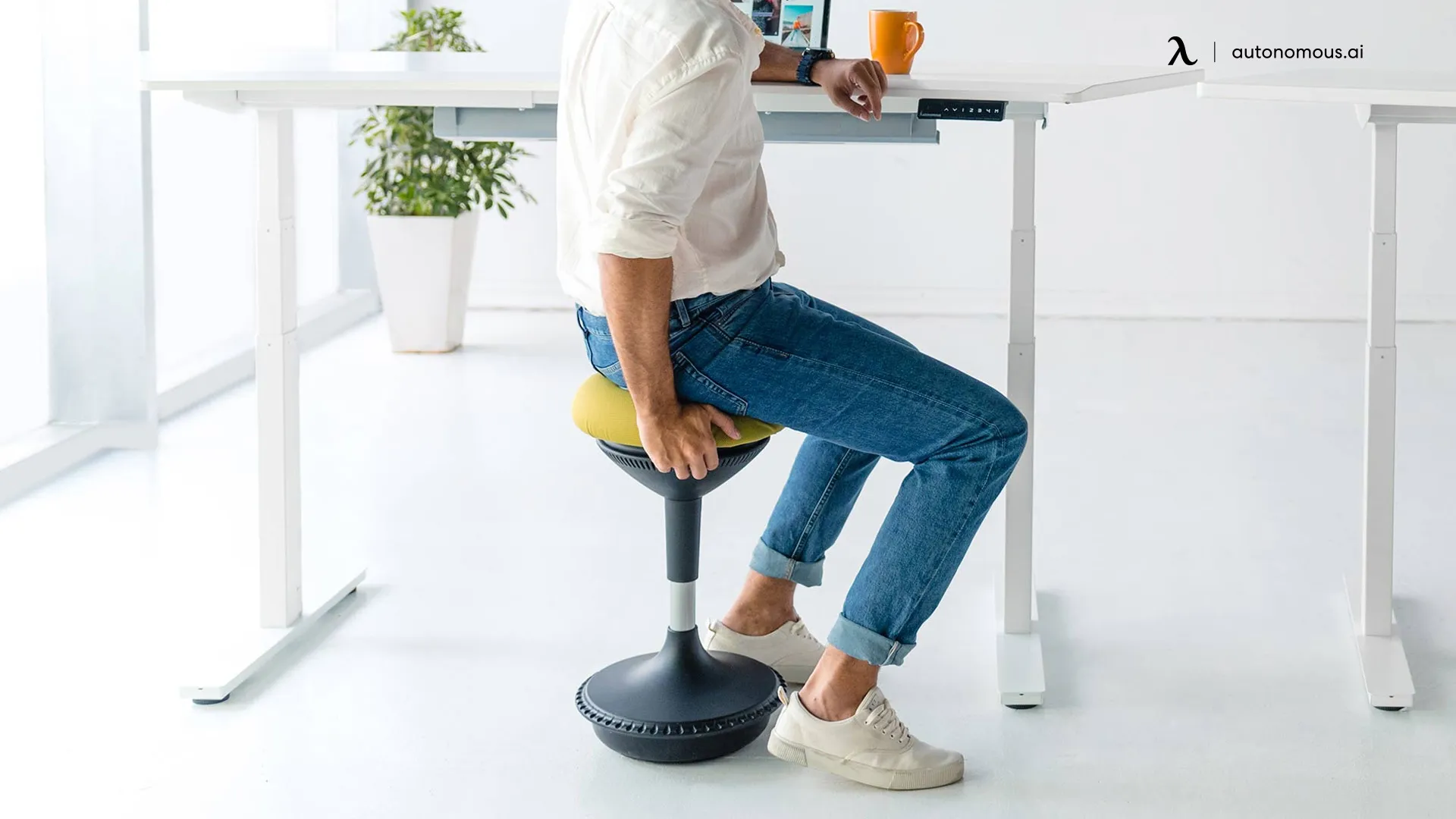
Pros And Cons
Pros:
- Promotes micro-movements to reduce fatigue
- Strengthens postural muscles
- Compact and portable for multipurpose spaces
- Versatile with different desk setups
Cons:
- Limited cushioning compared to upholstered chairs
- Lack of back support may not suit everyone
- Not designed for prolonged stillness or deep-focus tasks
Best For
Stools are ideal for users who thrive on movement and want to avoid static postures. They’re particularly useful in creative environments or home office setups where variety and flexibility are important.
10. Floor Seating With Cushions Or Tatami Setups
Floor seating alternatives often involve ergonomic cushions, low desks, or tatami-style mats inspired by traditional Japanese seating. These setups encourage a cross-legged or kneeling posture close to the ground.
For a balanced arrangement, some people combine this approach with a floor standing desk, which allows them to alternate between low seating and upright work throughout the day.
Benefits Of Cushions Or Tatami Setups
Floor seating can increase hip flexibility, engage core muscles, and create a minimalist aesthetic. The absence of bulky furniture also saves space, making it appealing for compact home offices.
.webp)
Pros And Cons
Pros:
- Encourages mobility and stretching
- Minimalist and space-saving design
- Affordable compared to most chairs
Cons:
- Can strain hips, knees, or ankles without proper support
- Not suitable for everyone’s body type or flexibility level
- Requires low tables, which may not fit all work setups
Best For
Floor seating works best for individuals comfortable with low postures or those seeking a minimalist workspace. It’s a practical choice for small apartments or multipurpose rooms where space is at a premium.
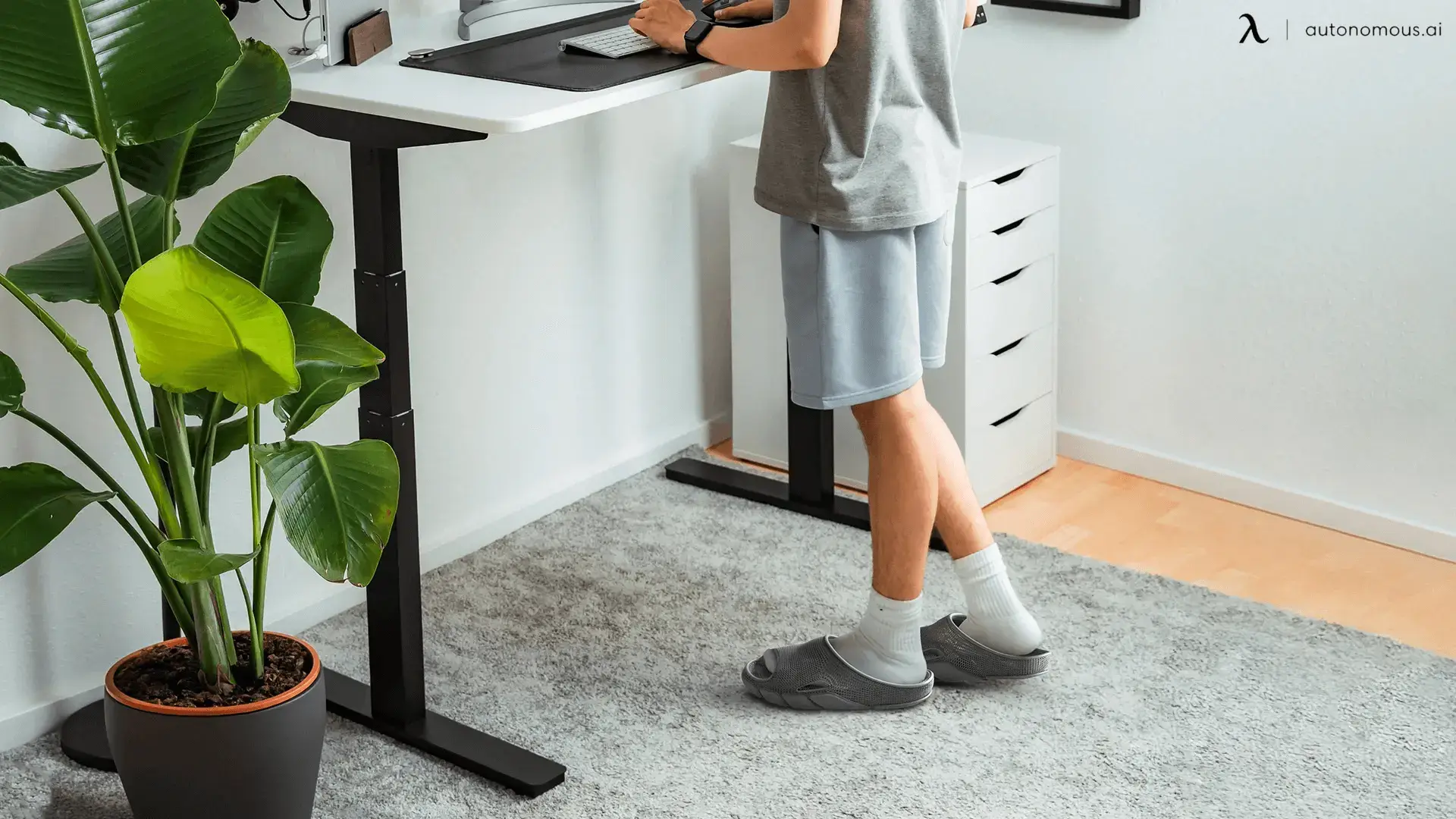
FAQs
1. What are the best office chair alternatives for back pain?
Kneeling chairs, saddle stools, and zero-gravity recliners are among the best office chair alternatives for back pain. They reduce lumbar pressure and help maintain a neutral spine during desk work.
2. Are exercise balls good alternatives to office chairs
Exercise balls encourage active sitting by engaging the core and improving circulation. However, they lack back support, so they work best as part-time desk chair alternatives rather than full-day seating.
3. Which unconventional office chairs improve posture the most?
Saddle chairs and kneeling chairs are the most effective unconventional office chairs for posture. Both open the hip angle and encourage an upright spine, reducing slouching over time.
4. Can under-desk bikes or ellipticals replace a regular office chair?
Under-desk bikes and ellipticals are movement-focused desk chair alternatives, but they don’t replace chairs completely. They work best alongside adjustable desks or as supplements to sitting, and they can also help reduce issues like poor circulation or discomfort—similar to these tips on how to prevent feet swelling while sitting at a desk.
5. Are balance boards considered good office chair alternatives?
Balance boards aren’t chairs, but they are valuable add-ons for standing desk users. They keep your legs and core active, making them one of the more dynamic office chair alternatives.
To get the most out of them, it also helps to know how often you should stand up from your desk, so your routine balances both movement and rest.
6. What are the most affordable desk chair alternatives?
Floor cushions, stability balls, and basic perching stools are the most budget-friendly desk chair alternatives. They provide variety and ergonomic benefits without the high price tag of premium chairs.
7. What are the best office chair alternatives for small home offices?
Compact stools, balance boards, and floor seating setups are the best office chair alternatives for small spaces. They save room while still supporting healthier sitting habits.
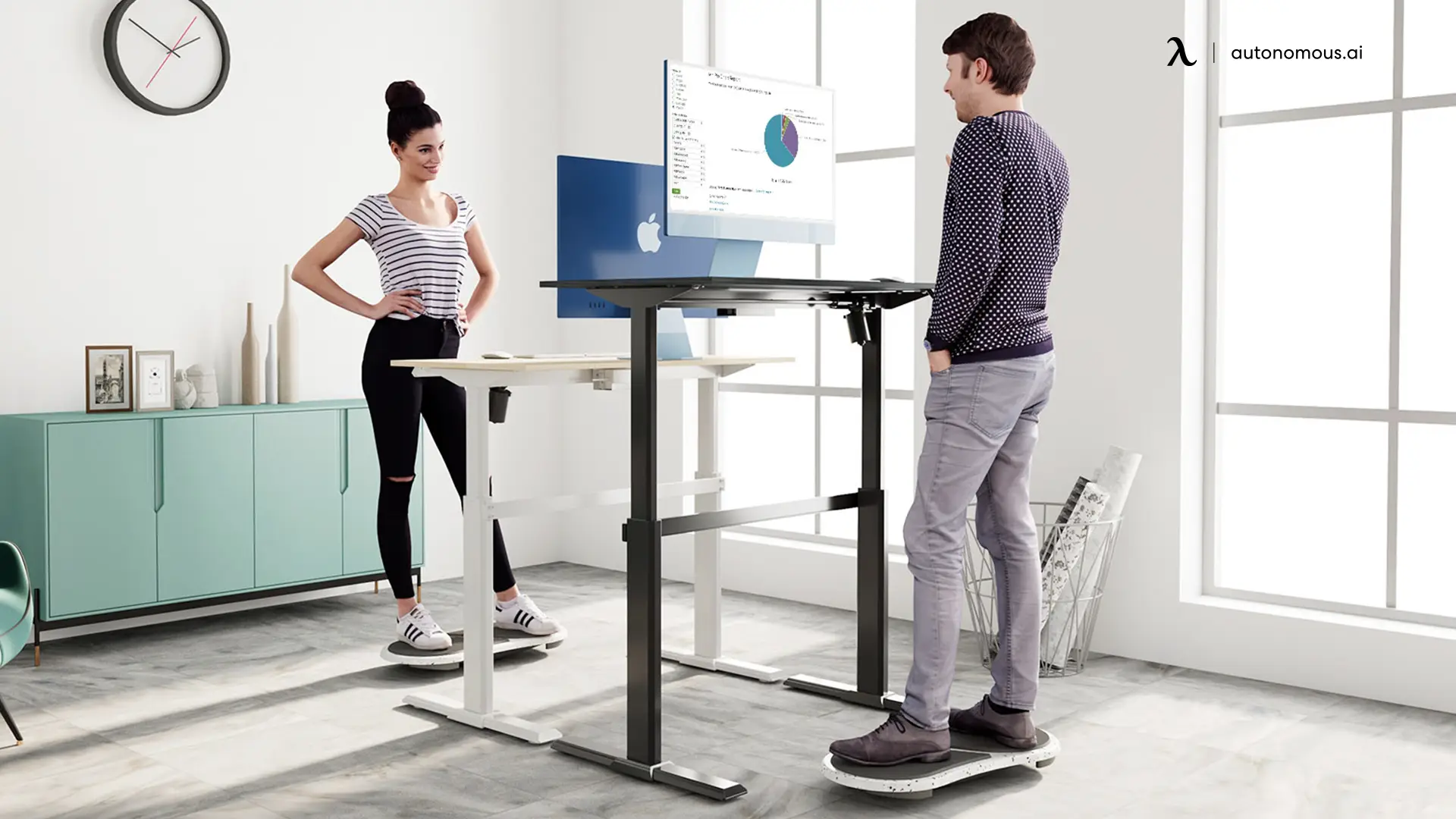
Conclusion
Exploring office chair alternatives opens up a world of healthier, more flexible ways to work. From posture-focused designs like kneeling and saddle chairs to more dynamic options like perching stools, balance boards, and under-desk bikes, each alternative brings a unique approach to comfort and movement. Even unconventional choices such as bean bags or floor seating have their place in creating a workspace that feels more personal and adaptable.
There’s no single solution that works for everyone. The best approach is to mix and match different desk chair alternatives depending on your body, your tasks, and the environment you’re working in. For posture support, a kneeling chair might be ideal; for variety, an active sitting stool could keep you moving; and for relaxation, a recliner or bean bag might be the right fit.
What matters most is building a setup that keeps you comfortable, focused, and supported throughout the day. Alongside seating, incorporating movement into your workday makes a big difference—whether it’s office chair exercises, exercises to do at a standing desk, seated stretching exercises, or even chair exercises for weight loss.
With the right balance of seating and movement, these unconventional office chairs can make a real difference in how you feel at work—and that’s what makes them some of the best office chair alternatives available today.
Spread the word
.svg)

